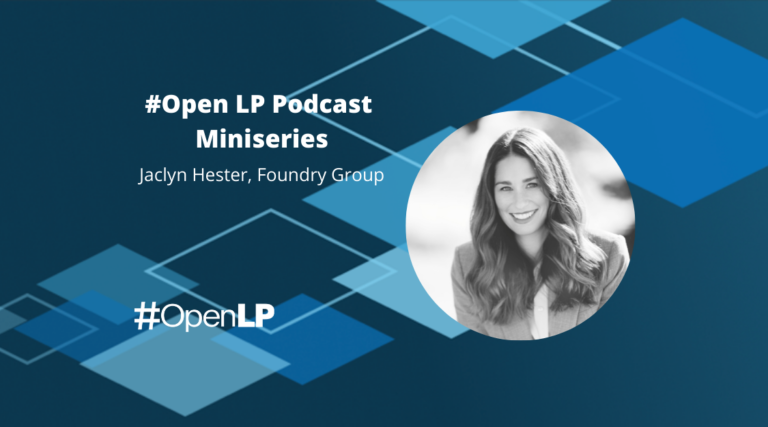This article originally appeared on Sapphire Ventures Perspectives on Jan. 18, 2016.
Sapphire Partners investment team backs emerging and established fund managers with deep expertise in enterprise and consumer technologies. As a member of this team I have the pleasure of meeting with hundreds of fund managers who share our excitement for helping early-stage entrepreneurs become global category leaders. During these meetings we often think about what motivates the fund managers, the origins of their firm and how and why the firm was created in the first place. This blog series attempts to answer those questions by offering different perspectives from VC’s on the thoughts and efforts that go into building a successful venture capital firm.
In this interview, we discuss some of the issues Founder Greg Sands faced when creating his venture capital firm, Costanoa Ventures. Last year, Costanoa closed $135 million in commitments for its second core fund and is actively investing in early-stage enterprise companies in SaaS and data driven applications. The interview below has been edited for length and narrative.
Sapphire Ventures (SV): How did you derive your initial investment thesis?
Greg Sands (GS): I fully believe that the fundraising process should begin by having a thesis, then raising a fund, and not vice versa. To this end, my thesis at Costanoa began by first noticing that it was taking less money to build a market-ready product. While the whole process of creating a company can still require significant capital, especially with respect to sales and marketing spend, the first piece of having a go-to-market-ready product was becoming less expensive than ever before, and I felt there was an opportunity for a fund. Moreover, there was a dynamic in the venture capital market whereby big multi-stage firms were getting bigger, raising growth funds, and investing in later stage companies. I had seen the creation of a handful of seed firms in and around consumer and social media, but these funds tended to invest in a lot of companies per fund versus having a concentrated portfolio consisting of fewer, higher conviction opportunities. As well, I had not seen seed funds targeting SaaS, data driven apps, and early-stage enterprise companies. Since I had done early stage before, and had been an active investor in data driven apps while at Sutter Hill, including Merced initially in 2001, my fund thesis came out of 10 years of experience in the space combined with the current dynamics of the market at the time.
SV: How did you think about your target fund size?
GS: Two things. First, the goal was to hit a certain target size to be in business. Second, I knew the size of the fund would determine the strategy to a certain extent. For example, I was willing to do a seed-stage fund as a starter fund if the fund did not reach the target size; however, my objective was to be a Series A investor, since this strategy was most consistent with my own skills and desires. Fortunately we were able to raise $100 million for Fund I, which meant we were able to carry out a Series A strategy by investing $2 million to $3 million into early-stage companies and be well reserved for follow-on rounds.
SV: What was your strategy for fundraising?
GS: To call people that I knew and trusted, including co-investors in companies I had backed previously. As this was my first time raising a fund, I needed to ask for help, get counsel and advice, and integrate this advice practically in my fundraising efforts. If someone told me to call Bill, for example, then I would call Bill. I took a relationship-driven approach where others could take a more methodical one. I was listening carefully to what was working and not working.
SV: How did you think about the composition of your limited partner (LP) base?
GS: I was looking for the fastest-moving investors, which tended to be fund of funds and family offices. High net worth relationships were even faster. In terms of allocation, I targeted 15–20 percent for the largest LP.
SV: What was the hardest part of fundraising?
GS: At some level, fundraising is a sales funnel and the single hardest thing was trying to qualify where to spend time. I needed to know if a potential investor had capital to invest and would consider investing in a manager like me with my background and pedigree so I would ask these questions and qualify based on interest and amount of capital the investors could commit.
SV: Anything else that was helpful for you during fundraising?
GS: The other thing that is highly relevant is having references prepared; entrepreneurs, investors, board members and management teams are necessary ingredients for getting the fund raised.
SV: What were some of the most challenging questions asked by LPs?
GS: Where do you sit in the ecosystem and why are you different? There were also questions about attribution and roles with which I was previously associated. Potential investors were trying to understand and gain clarity into my real role in a particular investment.
SV: How did you think about growing your team at Costanoa?
GS: My objective was to never be a lone wolf. It is very hard to find people that are very good investors. That is, people that can communicate well, have different points of view and have resonance with entrepreneurs. All of these facets are critical. Having people rotate through doesn’t always work well at a venture firm. My philosophy is quality over quantity, go slowly.
SV: Does the position affect your thinking about the need for shared experience?
GS: Yes, it depends on the level in terms of how long you need to know someone before bringing them on. You need at least a year of experience together before bringing on a partner. A long working history and long data set together is good. For junior or mid-level team members, there is still a process, but three months is workable.
SV: How do you vet for the right person?
GS: The critical question is can this person bring a point of view that improves the investment process and aligns with the firm’s values, such as being collegial and collaborative at Costanoa. A venture role tends to be very unstructured, so the person needs to be able to get things done without supervision. The right candidate can find new categories and new entrepreneurs with judgment. This person should also have some overlap with the expertise of others at the firm. Not completely, but members of the investment team should share some sectors of expertise as it is important to have the depth of knowledge that comes from this.
SV: What were some learnings you had in the first year of fund management?
GS: Determining what level of diligence was required to write a $2 million check in absence of consulting with eight experienced partners, which served as a great resource when I was at Sutter Hill. Also, I was learning where I could compete to be a legitimate competitor. While I had investment experience at my prior firm, leading 28 investments between $2 million and $15 million check sizes, as well as all follow-on rounds, I still remained focused on refining Costanoa’s strategy, thinking through issues such as how many investments to make, how much should be reserved per company, what’s the expectation and distribution of returns, and underwriting criteria necessary to have a well-performing fund. I had an advantage because of my experience and understood these fund concepts well.
SV: What was the most rewarding part of creating Costanoa?
GS: To work with great teams in the service of great companies. Our success is a derivative of their success. To celebrate products that really work and make a difference in customers’ lives. To witness an increase in revenues of a business that tells you that the business model is working.
SV: Thanks, Greg. Any final words of wisdom?
GS: Work with high quality people. Life’s too short to burn bridges. Remind yourself that it’s a marathon, not a sprint!



